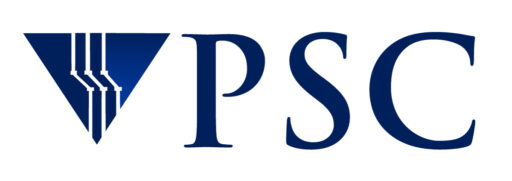Anton at PSC Research Highlights
Here are a few highlights of the research enabled by Anton systems at PSC:
Protein dehydration during folding. The team combined 110 μs Anton 2 MD simulations with rapid pressure-drop experiments to study how water gets out of a protein as it folds. Prigozhin, Maxim B., Yi Zhang, Klaus Schulten, Martin Gruebele, and Taras V. Pogorelov PNAS, 2019. https://doi.org/10.1073/pnas.
Molecular mechanisms of arrestin activation – Simulations provide a structural foundation for the design of functionally selective ligands that lead to particular GPCR signaling profiles. N. Latorraca and R. Dror. doi:10.1038/s41586-018-0077-3
Uncovering new ways to target flu viruses – A conserved amino acid could provide a target toward a universal vaccine for viruses. Xingcheng Lin, Jeffrey K. Noel, Qinghua Wang, Jianpeng Ma, and Jose Onuchic. doi:10.1073/pnas.1805442115.
Kink formation is required for lateral gating in BamA – Simulations of BamA reveal a dynamic gating between the N- and C-terminal strands at the barrel seam. Using free-energy calculations and mutagenesis experiments, it was determined that the C-terminus has to kink inward for efficient opening. lateral gating in BamA. Karl Lundquist, Jeremy Bakelar, Nicholas Noinaj, and JC Gumbart. doi:10.1073/pnas.1722530115
World’s Tiniest Test Tubes in Alzheimer’s Protein Simulation – Simulations of plaque-forming beta amyloid molecules offer insights towards possible Alzheimer’s drug therapies. From PSC’s Science Highlights Fall 2018. G. Eskici and P.H. Axelsen. doi:10.1021/acs.langmuir.7b04192.
“Sticky and Loose Ends” Shed Light on Heart Health – Simulations show APOA1 protein ends link to hold together “the good cholesterol”. From PSC’s Science Highlights Fall 2018. Mohsen Pourmousa, Richard Pastor, Jere Segrest, et. al. doi: 10.1073/pnas.1721181115
Locked, Not Loaded – New target in HIV-1 replication. Simulations may lead to more effective anti-maturation drugs to fight AIDS and possibly other viral diseases. From PSC’s Science Highlights Spring 2018. J. Perilla et al. doi:10.1038/s41467-017-01856-y.
Snapping into Place – Simulations give clue to poorly understood role of tubulin, the cell’s “Lego bricks”. From PSC’s Science Highlights Spring 2018. David Hoogerheide. doi:10.1073/pnas.1721181115.
Inner Space – Work on Anton highlights the importance of empty space for protein function. Simulations of T4 lysozyme L99A show that big gaps opened up in the protein, which “let in” molecules roughly the size of drug molecules. From PSC’s Science Highlights Fall 2017.
Hooked Up – Simulations on Anton discover the critical role disulfides play in holding together MCoTI-II, a natural pesticide that would fall apart without disulfide bridges. From PSC’s Science Highlights Spring 2017.
“The Dynamics of Single Protein Molecules Is Non-Equilibrium and Self-Similar over Thirteen Decades in Time.” Nature Physics 12, no. 2 (2016): 171–74. doi:10.1038/nphys3553. Hu, Xiaohu, Liang Hong, Micholas Dean Smith, Thomas Neusius, Xiaolin Cheng, and Jeremy C. Smith. This article was highlighted in the cover of Nature Physics and discussed in the following article: Metzler R, News and Views Protein physics: Forever ageing, Nature Phys., 2016, 12, 113–114, doi:10.1038/nphys3585.
“Disulfide Bridges: Bringing Together Frustrated Structure in a Bioactive Peptide”. Biophysical Journal 110, no. 8 (April 2016): 1744–52. doi:10.1016/j.bpj.2016.03.027. Zhang, Yi, Klaus Schulten, Martin Gruebele, Paramjit S. Bansal, David Wilson, and Norelle L. Daly. This article was featured on the cover of the Biophysical Journal.
“Hexagonal Substructure and Hydrogen Bonding in Liquid-Ordered Phases Containing Palmitoyl Sphingomyelin.” Biophysical Journal 109, no. 5 (September 2015): 948–55. doi:10.1016/j.bpj.2015.07.036 Sodt, Alexander J., Richard W. Pastor, and Edward Lyman. This study was featured on the cover of the Biophysical Journal and highlighted as New and Notable: http://www.cell.com/biophysj/abstract/S0006-3495(15)00772-9
Janus Channel – Anton simulations reveal how pain, epilepsy drugs work through same target protein, from PSC’s Projects in Scientific Computing, Spring 2015.
A TUG Felt Elsewhere – Anton simulations show how drug-producing enzyme is enhanced by changes far from reactive site, from PSC’s Projects in Scientific Computing, Fall 2014.
Roll Out the Beta Barrels – Anton simulations reveal how dangerous bacteria install critical proteins, from PSC’s Projects in Scientific Computing, Spring 2014.
Two Steps Forward, One Step Back – molecular dynamics simulations disclose how water leaving and then re-entering the potassium channel delays its return to the active state, from PSC’s Projects in Scientific Computing, Spring 2014.
A Movie is Worth a Million Pictures – structural dynamics simulations illuminate the mechanisms of sodium-coupled substrate binding/release in an aspartate transporter, from PSC’s 2013 annual report, Projects in Scientific Computing
Epic Microseconds – four projects yielding invaluable insights into the structure and function of proteins from PSC’s 2012 annual report, Projects in Scientific Computing
Protein Research Leaps Forward – four projects in MD simulation from PSC’s 2011 annual report, Projects in Scientific Computing
Atomic-Level Characterization of the Structural Dynamics of Proteins – This paper, published in Science, details the first millisecond MD simulation on Anton.
Shaw, David E., Paul Maragakis, Kresten Lindorff-Larsen, Stefano Piana, Ron O. Dror, Michael P. Eastwood, Joseph A. Bank, John M. Jumper, John K. Salmon, Yibing Shan, Willy Wriggers. “Atomic-Level Characterization of the Structural Dynamics of Proteins” Science 15 Oct 2010: 341-346 DOI: 10.1126/science.1187409
Millisecond-scale molecular dynamics simulations on Anton – This paper (Gordon Bell prize winner for best paper at SC09 ) contains measurements of energy conservation on Anton that you can use to compare with your own simulations.
Publications
View publications enabled by research that made use of Anton systems at PSC.
Contact us
For questions about Anton at PSC, email anton-support@psc.edu.
The operations of Anton at PSC are supported by the National Institute of General Medical Sciences of the National Institutes of Health under Award Number 1R24GM154042. This content is solely the responsibility of the authors and does not necessarily represent the official views of the National Institutes of Health.
Anton at PSC is a resource of the NIGMS National and Regional Resources Program. Its operations are supported by the National Institute of General Medical Sciences of the National Institutes of Health under Award Number 1R24GM154042. This content is solely the responsibility of the authors and does not necessarily represent the official views of the National Institutes of Health.
